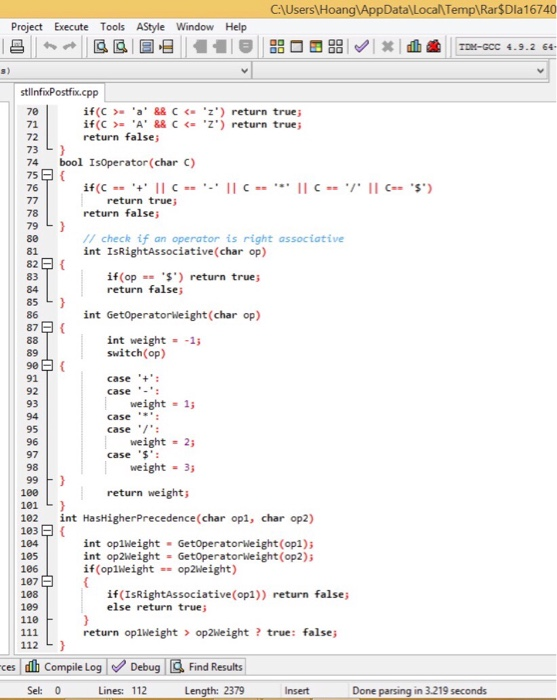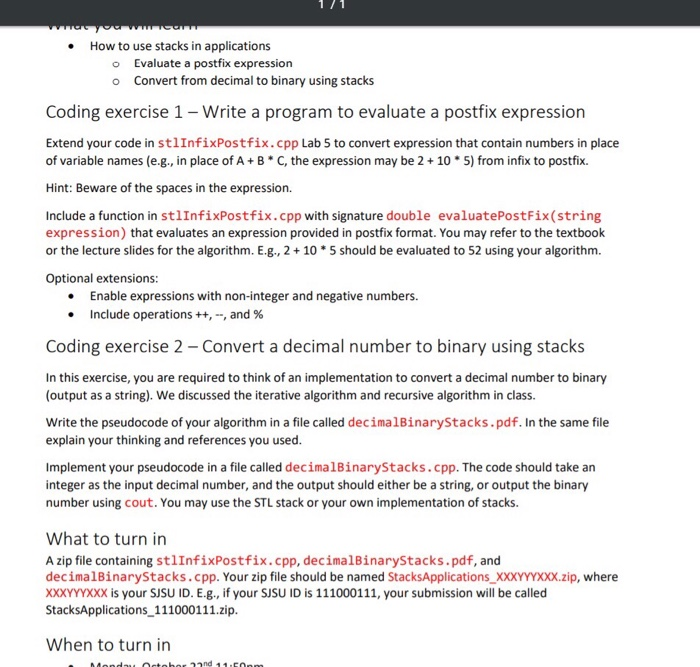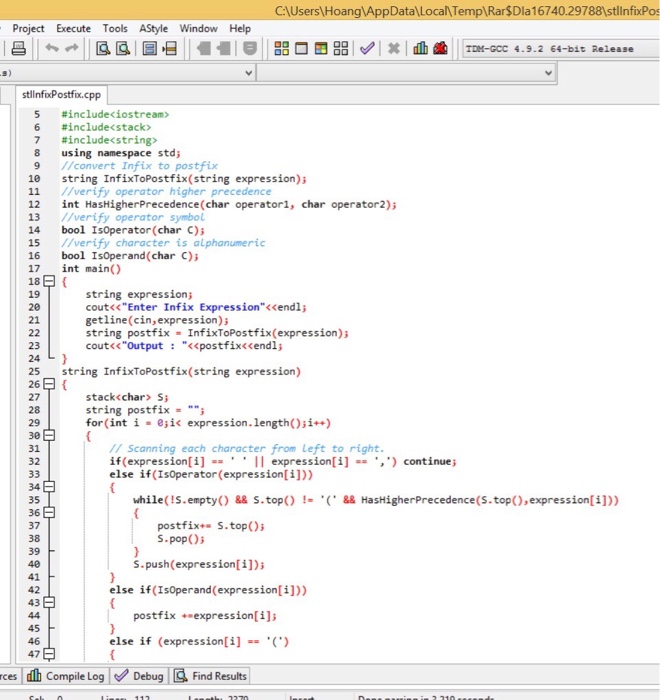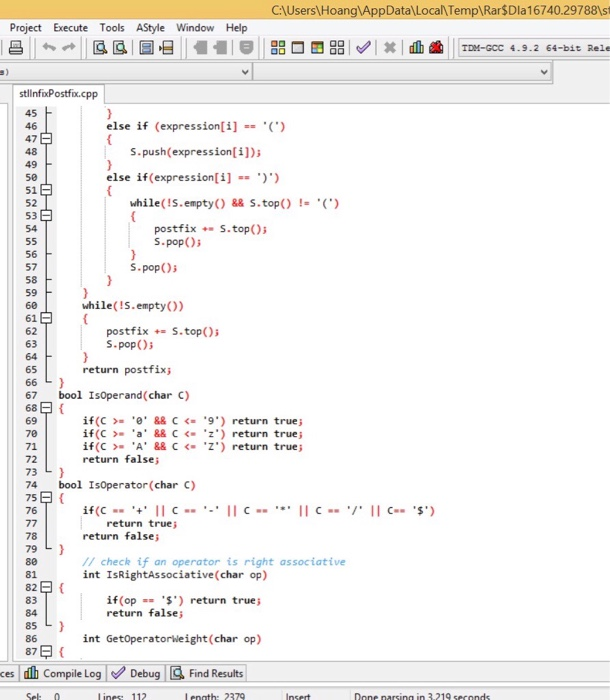
Please help me solving this. I need to do 3 file : stlInfixPostfix.cpp, decimalBinaryStacks.pdf, and decimalBinaryStacks.cpp
How to use stacks in applications Evaluate a postfix expression Convert from decimal to binary using stacks o Coding exercise 1 - Write a program to evaluate a postfix expression Extend your code in stlInfixPostfix.cpp Lab 5 to convert expression that contain numbers in place of variable names (e.g., in place of A B C, the expression may be 2 10 5) from infix to postfix. Hint: Beware of the spaces in the expression. Include a function in stlInfixPostfix.cpp with signature double evaluatePostFix(string expression) that evaluates an expression provided in postfix format. You may refer to the textbook or the lecture slides for the algorithm. E.g., 2 10 5 should be evaluated to 52 using your algorithm. Optional extensions: Enable expressions with non-integer and negative numbers. Include operations ++,--, and % . Coding exercise 2 -Convert a decimal number to binary using stacks In this exercise, you are required to think of an implementation to convert a decimal number to binary (output as a string). We discussed the iterative algorithm and recursive algorithm in class. Write the pseudocode of your algorithm in a file called decimalBinaryStacks.pdf. In the same file explain your thinking and references you used. Implement your pseudocode in a file called decimalBinaryStacks.cpp. The code should take an integer as the input decimal number, and the output should either be a string, or output the binary number using cout. You may use the STL stack or your own implementation of stacks. What to turn in A zip file containing stlInfixPostfix.cpp, decimalBinaryStacks.pdf, and decimalBinaryStacks.cpp. Your zip file should be named StacksApplications XXXyYxxx.zip, where Xxxyyxxx is your SJSU ID. E.g., if your SJSU ID is 111000111, your submission will be called StacksApplications_111000111.zip. When to turn in How to use stacks in applications Evaluate a postfix expression Convert from decimal to binary using stacks o Coding exercise 1 - Write a program to evaluate a postfix expression Extend your code in stlInfixPostfix.cpp Lab 5 to convert expression that contain numbers in place of variable names (e.g., in place of A B C, the expression may be 2 10 5) from infix to postfix. Hint: Beware of the spaces in the expression. Include a function in stlInfixPostfix.cpp with signature double evaluatePostFix(string expression) that evaluates an expression provided in postfix format. You may refer to the textbook or the lecture slides for the algorithm. E.g., 2 10 5 should be evaluated to 52 using your algorithm. Optional extensions: Enable expressions with non-integer and negative numbers. Include operations ++,--, and % . Coding exercise 2 -Convert a decimal number to binary using stacks In this exercise, you are required to think of an implementation to convert a decimal number to binary (output as a string). We discussed the iterative algorithm and recursive algorithm in class. Write the pseudocode of your algorithm in a file called decimalBinaryStacks.pdf. In the same file explain your thinking and references you used. Implement your pseudocode in a file called decimalBinaryStacks.cpp. The code should take an integer as the input decimal number, and the output should either be a string, or output the binary number using cout. You may use the STL stack or your own implementation of stacks. What to turn in A zip file containing stlInfixPostfix.cpp, decimalBinaryStacks.pdf, and decimalBinaryStacks.cpp. Your zip file should be named StacksApplications XXXyYxxx.zip, where Xxxyyxxx is your SJSU ID. E.g., if your SJSU ID is 111000111, your submission will be called StacksApplications_111000111.zip. When to turn in



 Please help me solving this. I need to do 3 file : stlInfixPostfix.cpp, decimalBinaryStacks.pdf, and decimalBinaryStacks.cpp
Please help me solving this. I need to do 3 file : stlInfixPostfix.cpp, decimalBinaryStacks.pdf, and decimalBinaryStacks.cpp 





